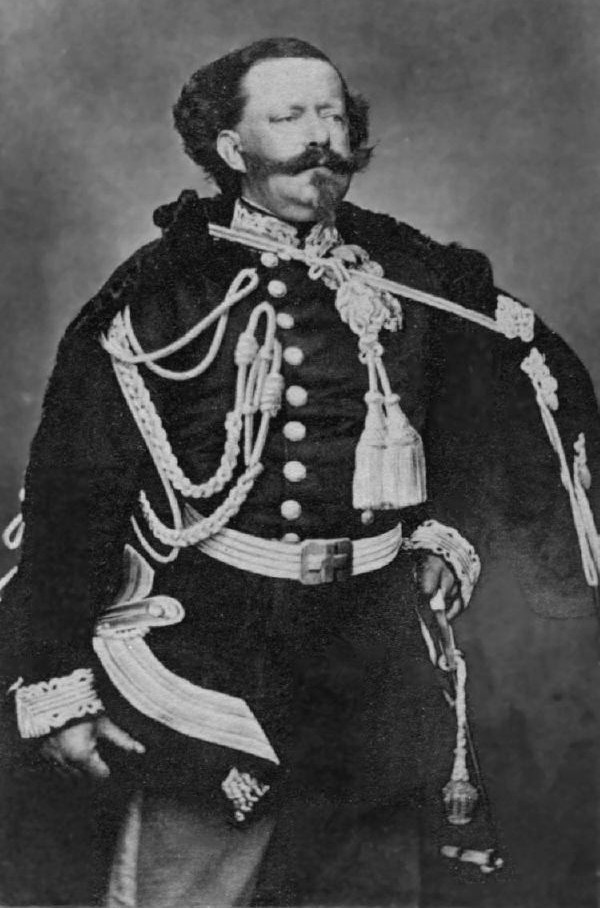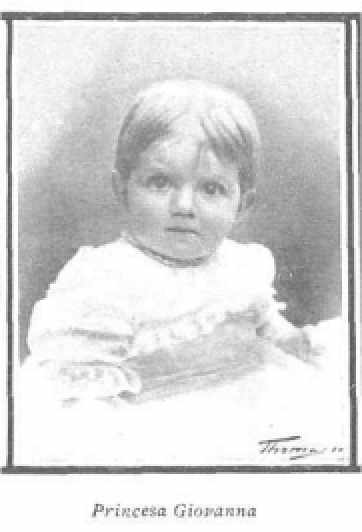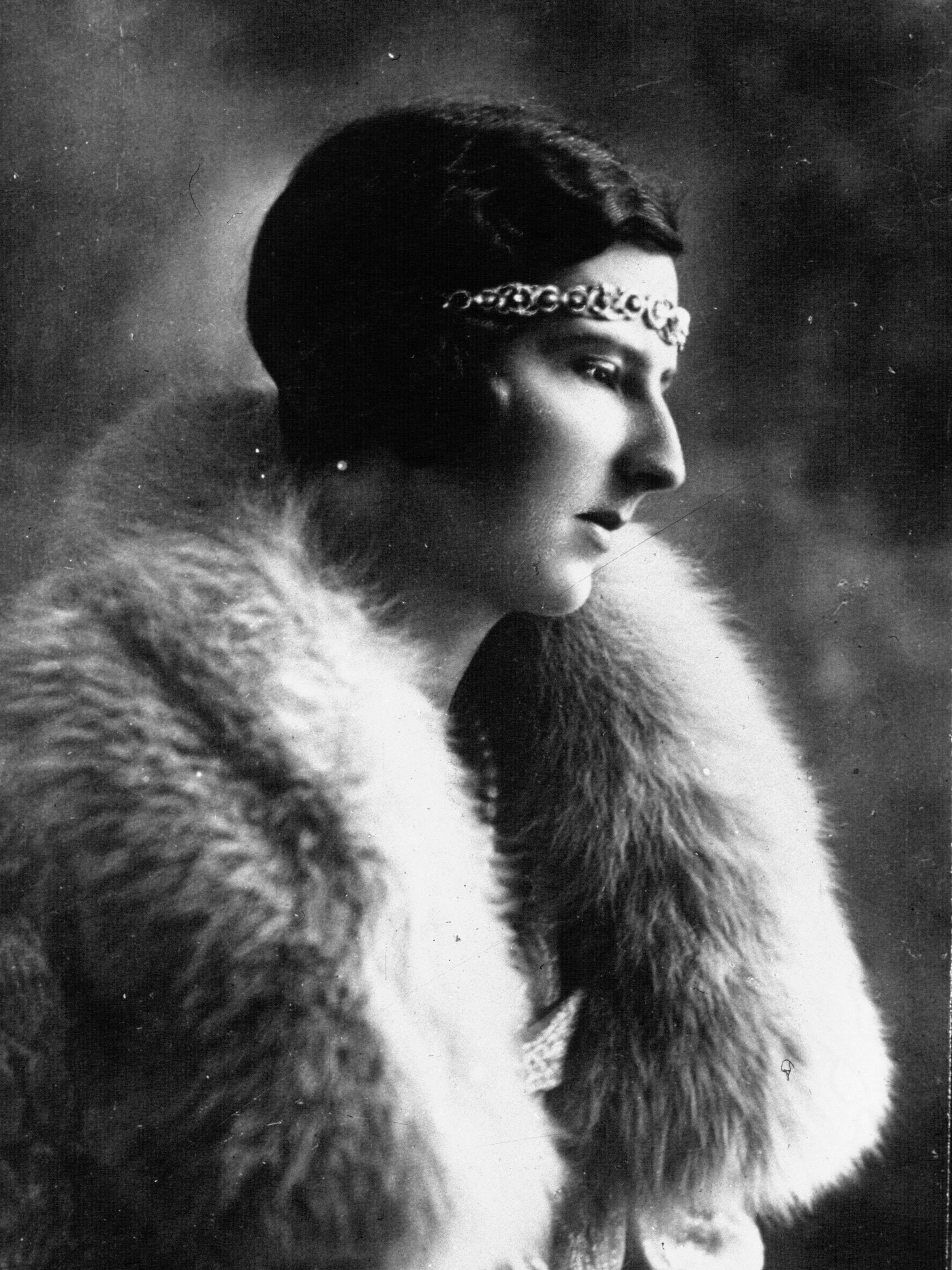by Scott Mehl © Unofficial Royalty 2016

King Vittorio Emanuele II of Italy; source: Wikipedia
King Vittorio Emanuele II of Italy reigned from 1861 until 1878. He was born Prince Vittorio Emanuele Maria Alberto Eugenio Ferdinando Tommaso of Savoy on March 14, 1820, in Turin, the eldest son of Carlo Alberto, 7th Prince of Carignano, the future King of Sardinia, and Maria Theresa of Austria, Archduchess of Austria, Princess of Tuscany. He had two younger siblings:
- Prince Ferdinando of Savoy, Duke of Genoa (1822 – 1855) – married Princess Elisabeth of Saxony, had issue, including the future Queen Margherita of Italy
- Princess Maria Cristina of Savoy (1826 – 1827) – died in childhood
In 1831, Vittorio Emanuele’s father succeeded a distant cousin, becoming King of Sardinia. Vittorio Emanuele accompanied his father to Turin, where he underwent a very strict regimen of education and physical activities. Soon, he began his military career, attaining the rank of Colonel and commanding his own regiment. He later was elevated to the rank of General.

Vittorio Emanuele and his family, c1854. source: Wikipedia
On April 12, 1842, at the Palazzina de caccia di Stupinigi, Vittorio was married to Archduchess Adelheid of Austria. She was the daughter of Archduke Rainer Joseph of Austria and Princess Elisabeth of Savoy. Vittorio and Adelheid were first cousins, as his father and her mother were siblings. They were also first cousins once removed through their mutual descent from Leopold II, Holy Roman Emperor. Adelheid died on January 20, 1855, just twelve days after giving birth to their youngest child.
The couple had eight children:
- Marie Clotilde (1843 – 1911) – married Prince Napoléon Joseph Bonaparte, had issue
- King Umberto I of Italy (1844 – 1900) – married Princess Margherita of Savoy, had issue
- Prince Amedeo, Duke of Aosta (1845 – 1890) – later King Amadeo I of Spain – married (1) Maria Vittoria dal Pozzo, had issue; (2) Princess Maria Letizia Bonaparte, had issue
- Prince Oddone, Duke of Montferrat (1846 – 1866) – unmarried
- Princess Maria Pia (1847 – 1911) – married King Luís I of Portugal, had issue
- Prince Carlo Alberto, Duke of Chablais (1851 – 1854) – died as a child
- Prince Vittorio Emanuele (born and died 1852) – died at birth
- Prince Vittorio Emanuele, Count of Geneva (born and died 1855) – died as an infant
In 1847, 27-year-old Vittorio Emanuele met 14-year-old Rose Vercellana when her father became the commander of the royal garrison at the Royal Castle of Racconigi, the hunting estate of the royal family of Sardinia. She soon became his mistress. At that time, Vittorio Emanuele had been married to his wife Adelheid of Austria for seven years and five of their eight children had been born.
Vittorio Emanuele’s many other relationships were brief, but his relationship with Rosa lasted the rest of his life. Their early meetings were very secret because Vittorio Emanuele’s father Carlo Alberto, King of Sardinia was against the affair and because it was illegal to have sex with minors. Eventually, Rosa was given a home on the grounds of the Palazzina di caccia of Stupinigi (the hunting residence of Stupinigi), closer to Turin, the seat of government.
Rosa and Vittorio Emanuele had a daughter and a son, born when Rosa was fifteen and eighteen:
- Vittoria Guerrieri (1848 – 1905), married (1) Giacomo Filippo Spinola, had three children (2) Luigi Domenico Spinola, brother of her first husband, had one daughter (3) Paolo de Simone, no children
- Emanuele Alberto Guerrieri, Count of Mirafiori and Fontanafredda (1851 – 1894), married Bianca Enrichetta de Lardere, had two sons

Rosa and Vittorio Emanuele with their two children in the 1860s Credit – Wikipedia
Following a massive defeat by the Austrian forces, Vittorio Emanuele’s father abdicated on March 23, 1849, and he succeeded his father as King Vittorio Emanuele II of Sardinia. He was a driving force behind the “Risorgimento”, the Italian unification movement.
Over the next twelve years, Vittorio Emanuele II led the drive toward a unified kingdom. Under the leadership of Giuseppe Garibaldi, a noted general and politician, the Sardinian forces soon gained Sicily and Naples. He then led his forces against the Papal army, driving the Pope into Vatican City. This resulted in the Pope excommunicating Vittorio Emanuele from the Roman Catholic church. Garibaldi soon conquered the Kingdom of Two Sicilies but was stopped from attacking Rome as it was under protection from the French. With all the newly acquired lands, on March 17, 1861, Vittorio Emanuele was proclaimed the first King of the new, united Kingdom of Italy.
After the death of Vittorio Emanuele’s wife Adelheid in 1855, his relationship with Rosa Vercellana continued, despite his numerous other lovers, and became more public. Although the relationship caused much scandal and hostility at court, Vittorio Emanuele did not yield to any pressure. In 1858, Vittorio created Rosa Countess of Mirafiori and Fontanafredda, recognized their two children, and gave them the surname Guerrieri. A year later, Vittorio Emanuele purchased the Castle of Sommariva Perno (link in Italian) for Rosa. Although the Italian nobles despised Rosa, she was loved by the common people for her peasant origins.
When Vittorio Emanuele fell seriously ill in 1869 and feared he was dying, he married Rosa in a religious ceremony on October 18, 1869. However, Vittorio Emanuele did not die. The marriage was morganatic, a marriage between people of unequal social rank in which the position or privileges of the higher-ranked spouse are not passed on to the other spouse or any children. Rosa’s children had no succession rights and she did not become Queen of Italy, instead, she retained her titles Countess of Mirafiori and Fontanafredda, which the Vittorio Emanuele had given her in 1858. So that Rosa would have marriage civil rights, a civil marriage was held on October 7, 1877, just three months before Vittorio Emanuele’s death.

The Quirinal Palace. source: Wikipedia
In 1870, allied with Prussia, the King capitalized on Prussia’s victory over France in the Franco-Prussian War and captured Rome after the French forces withdrew. On September 20, 1870, Vittorio Emanuele entered Rome, established the city as the new capital of Italy, and took up residence at the Quirinal Palace in Rome, Italy.
The remainder of his reign was more peaceful. Vittorio Emanuele focused on building up the new Kingdom of Italy, both financially and culturally, further cementing his legacy as ‘Father of the Fatherland’ (Padre Della Patria), a title given to him by the Italian people. King Vittorio Emanuele II of Italy died at the Quirinal Palace on January 8, 1878. He is buried in the Pantheon in Rome.

Tomb of Vittorio Emmanuele II; Credit – By Fczarnowski – Own work, CC BY-SA 3.0, https://commons.wikimedia.org/w/index.php?curid=10594487
This article is the intellectual property of Unofficial Royalty and is NOT TO BE COPIED, EDITED, OR POSTED IN ANY FORM ON ANOTHER WEBSITE under any circumstances. It is permissible to use a link that directs to Unofficial Royalty.
Italy Resources at Unofficial Royalty





























